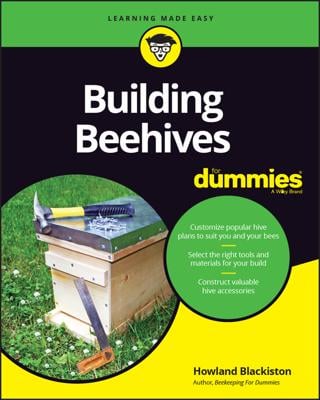If you’re like most beekeepers, it’s only a matter of time before you start to ask yourself, “Gee, wouldn’t it be twice as much fun to have twice as many hives?” Well, actually it is. And the neat thing is that you can create a second colony from your existing colony. You don’t even have to order another package of bees!
Free bees! Ah, but here’s the dilemma. You’ll need a new queen for your new colony. Strictly speaking, you don’t have to order a new queen. You can let the bees make their own; however, ordering a new queen to start a new colony is simply faster and more foolproof. Or if you want to get really adventurous, you can raise your own queen.
To make two hives from one, you first need a strong, healthy hive. That’s just what you hope your hive will be like at the start of its second season — boiling with lots and lots of busy bees. The procedure is known as dividing or making a divide.
Dividing not only enables you to start a new colony, it’s also considered good bee management — dividing thins out a strong colony and prevents that colony from swarming.
Making two hives from one also helps control Varroa mites by hindering mite reproduction. The divide causes a pause in brood production within the “new” hive. Since Varroa mites reproduce by laying eggs on bee brood, with no new brood available, the mites die out.
The best time to make a divide is in the early spring about a month before the first major nectar flow. Follow these steps in the order they are given:
Check your existing colony (colonies) to determine whether you have one that’s strong enough to divide.
Look for lots of bees, and lots of capped brood (six or more frames of capped brood and/or larvae are ideal). The situation should look crowded.
Order a new hive setup from your bee supplier.
You’ll want hive bodies, frames, foundation — the works. You need the elements to build a new home for your new family.
Order a new queen from your bee supplier.
Alternatively, you can allow the new colony to raise its own queen.
Your new queen doesn’t have to be marked, but having a marked queen is a plus, particularly when you’re looking for her because the mark makes her easier to identify. As a new beekeeper you should let your bee vendor mark your queen. A novice can end up killing a queen by mishandling her.
Put your new hive equipment where you plan to locate your new family of bees.
You’ll need only to put out one deep hive body at this point — just like when you started your first colony. Remove four of the ten foundation frames and set them aside. You’ll need them later.
When your new marked queen arrives, it’s time to divide!
Smoke and open your existing colony as usual.
Find the frame with the queen and set it aside in a safe place.
An extra empty hive body and cover will do just fine. Better yet, use a small “nuc” hive (available from your supplier). These mini‐hives contain only five frames.
Now remove three frames of capped brood (frames with cells of developing pupae) plus all the bees that are on each of them.
Place these three brood frames and bees in the center of the new hive. That still leaves one slot open because you removed four frames of foundation. The extra slot, however, provides the space that you need to hang the new queen cage (see Step 8).
Using two frame nails, fashion a hanging bracket for the new queen cage (candy side up) and hang the cage between brood frames in the middle of the new hive. Alternatively, if the weather is nice and warm, you can use the bottom‐board installation technique.
Make sure you have removed the cork stopper or metal disc, revealing the candy plug. This is the same queen introduction technique that you used when you installed your first package of bees.
Put a hive‐top feeder on your new colony, and fill it with sugar syrup.
Turn your attention back to the original hive.
Carefully put the frame containing the queen back into the colony. Add three of the new foundation frames (to replace the three brood frames that you removed earlier). Place these frames closest to the outer walls of the hive.
Add a hive‐top feeder to your original hive and fill it with sugar syrup.
Congratulations, you’re the proud parent of a new colony!

